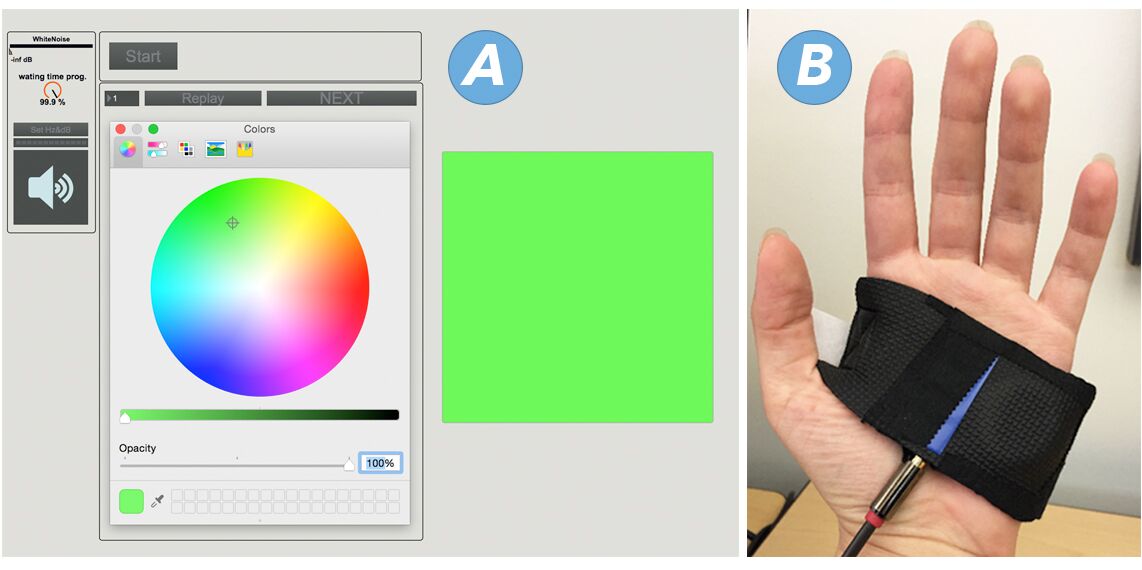Abstract

Participants matched a color to a vibrotactile stimulus of 1 s duration on the palm of the hand. Stimuli were combinations of one of six frequencies (10-200 Hz) and four amplitudes (10-40 dB SL). Color choices were converted to lightness, chroma, and hue angle values defined in the CIELAB color space. Results showed that the color chroma increases with the increase in vibratory amplitude, with no effect of vibration frequency. Lightness was not significantly modulated by the vibratory variables. Histograms of color hue showed three main peaks (violet, red and green) in participants’ responses. The pattern was for low-frequency vibrations (10- 35 Hz) to evoke the violet color hue at low amplitudes and the red color hue at high amplitudes, whereas high-frequency vibrations (60-200 Hz) evoked the green color hue with some trace of the red color hue at high amplitudes. The results are discussed for designing colorful experiences using vibrotactile feedback.
Copyright Notice
The documents contained in these directories are included by the contributing authors as a means to ensure timely dissemination of scholarly and technical work on a non-commercial basis. Copyright and all rights therein are maintained by the authors or by other copyright holders, notwithstanding that they have offered their works here electronically. It is understood that all persons copying this information will adhere to the terms and constraints invoked by each author’s copyright. These works may not be reposted without the explicit permission of the copyright holder.